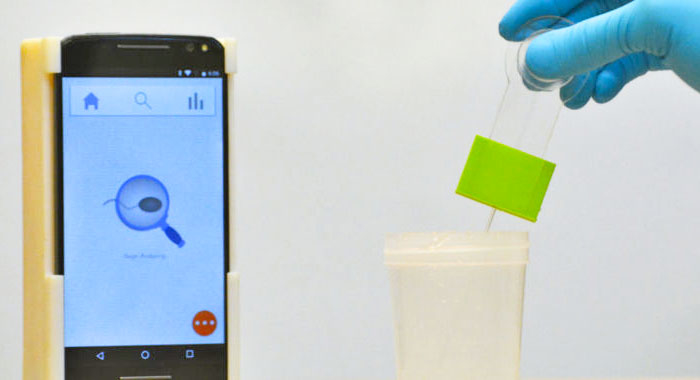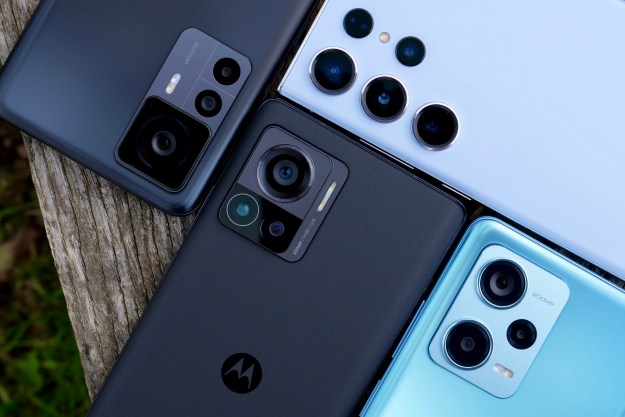
The bright minds at Harvard University created a new device that allows men to measure their ability to procreate with no more than their smartphone. The cost of production is a measly $4.45 and a prototype of the device requires less than five seconds to test how strong your swimmers are. It also analyzes sperm count with 98 percent accuracy.
“Although male infertility is as common as female infertility, it often goes undiagnosed because of socioeconomic factors such as stigma, high cost of testing, and availability of laboratory facilities,” the Harvard team noted in an abstract published in Science. “To facilitate the necessary testing, Kanakasabapathy et al. have designed a smartphone-based assay that can be performed at home or in a remote clinic without access to laboratory equipment.”
The easy-to-use device can be attached to your smartphone, and comes with a companion app — thanks to a microfluidic chip that comes with a minuscule tube, home testers can collect up to 35 microliters of semen, seal the sample, then use the device’s LEDs and lenses do the work. After analysis (which depends on stills and videos from your
Unfortunately, the device isn’t very good at identifying deformed sperm, which is key in determining fertility. That said, researchers believe that they can make improvements to address this issue. As exciting as these developments are, the device is still very much in its nascent stages. For one, the at-home fertility tester doesn’t even have a name yet and has not been approved by the Food and Drug Administration. So while the future looks bright, it’s still a ways away when it comes to testing your sperm with your phone.
Editors' Recommendations
- Can you take a picture of the solar eclipse with your phone? Here’s how to do it
- Have a Google Pixel phone? You’re about to get these new features
- If you have one of these Motorola phones, you’re getting a big Android update
- I’ve been using Android 14 for months. Here’s why you’re going to love it
- This is the fastest phone and laptop charger I’ve ever used. Here’s why you need it


